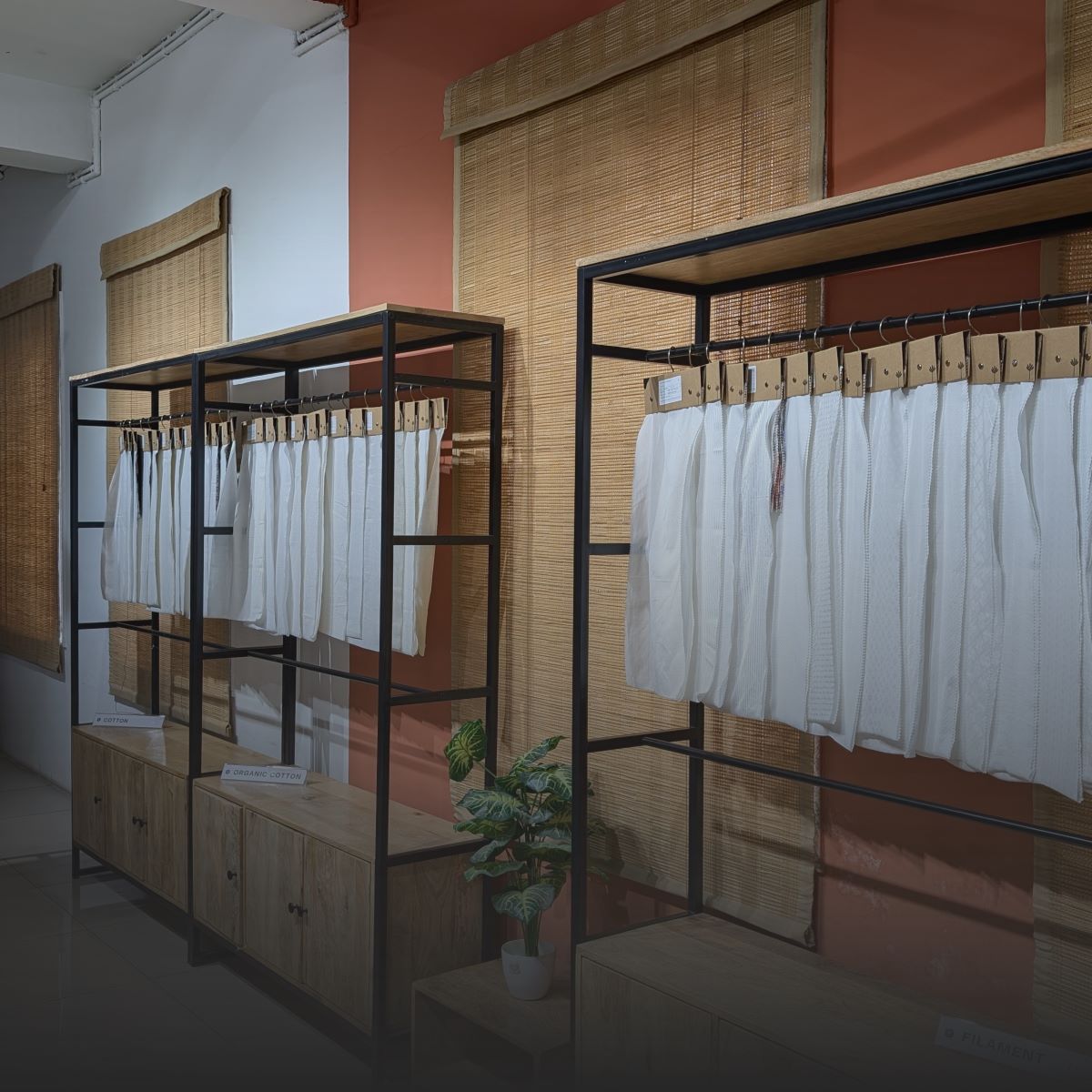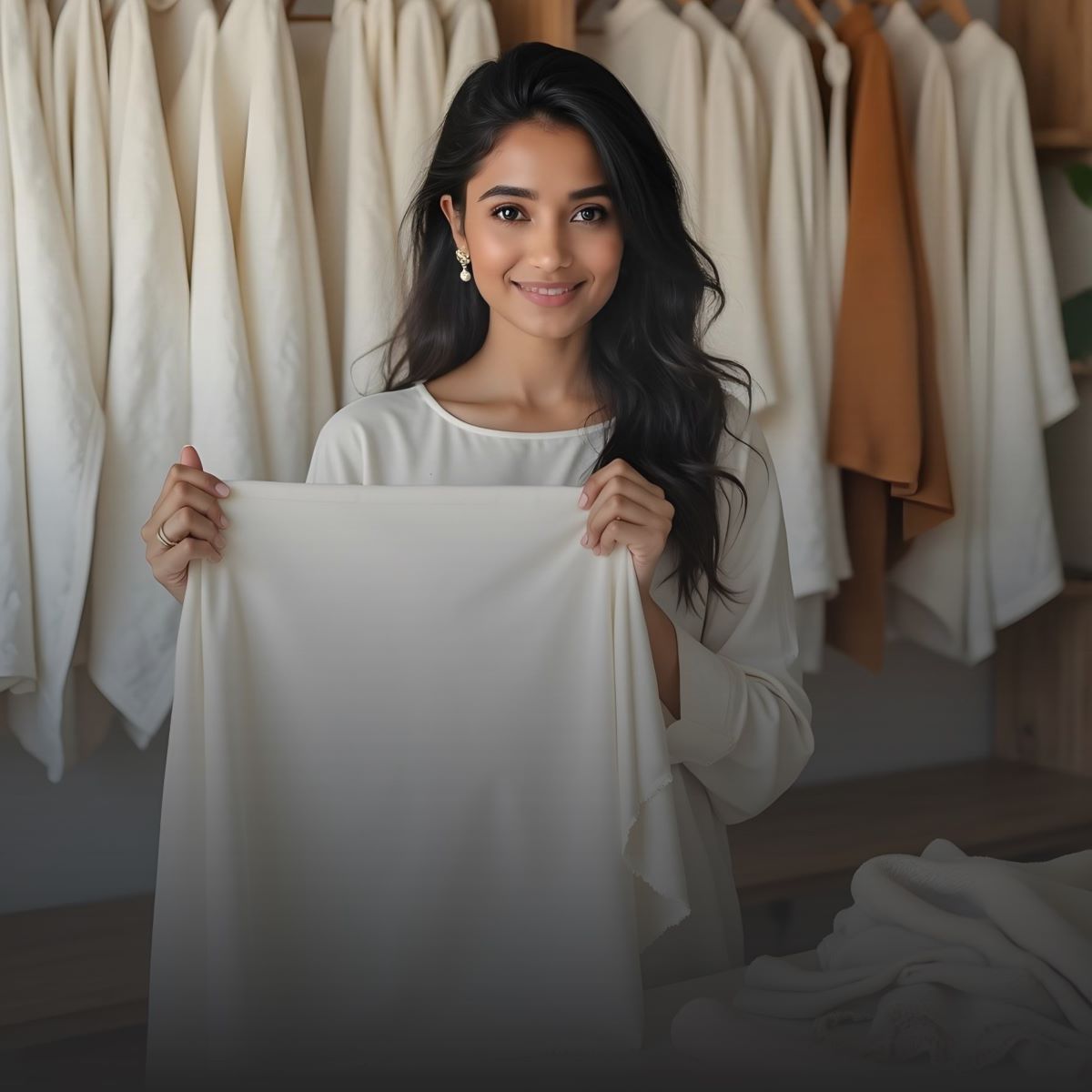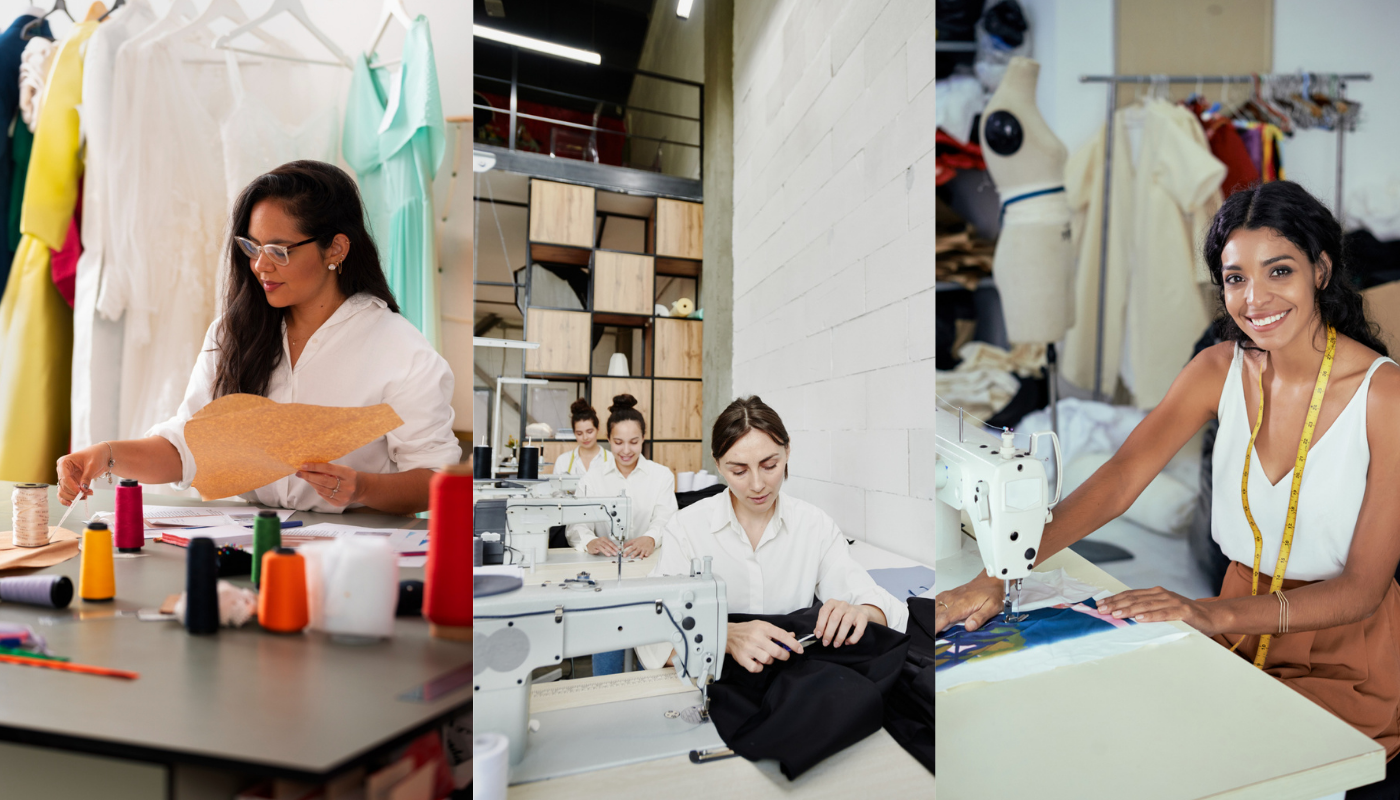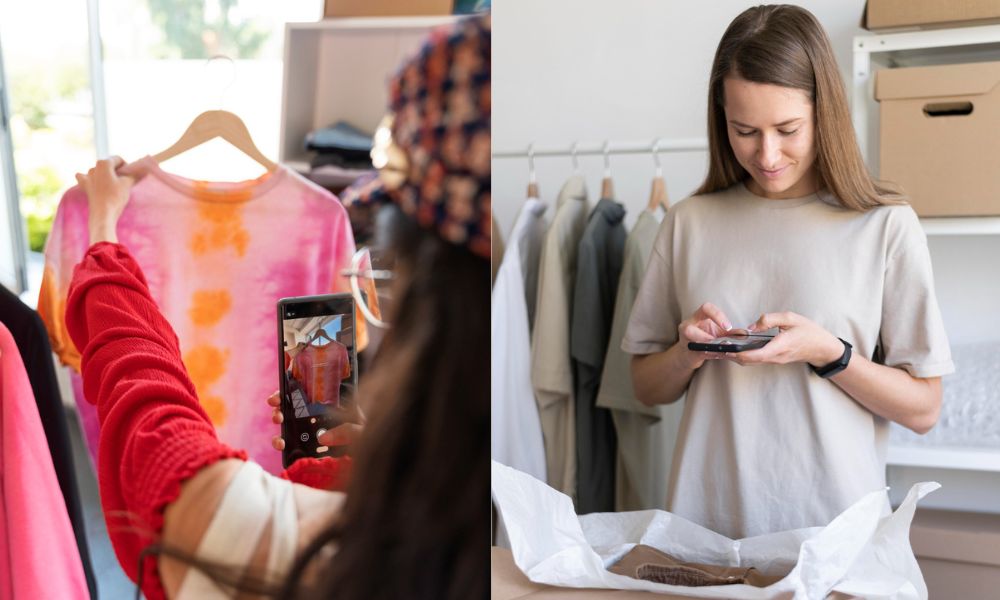Starting a garment business in the US requires innovation, design, and a reliable, scalable production and manufacturing infrastructure. In today's fast-paced, quality-conscious, and sustainability-driven fashion industry, on-time product delivery can make or destroy your firm.
So how do successful fashion entrepreneurs get from idea to production while keeping quality, sustainability and cost in mind? It all starts with a clever setup, and at its core is fabric sourcing.
In this informative article, we'll break down the procedures required to set up production of your clothing line in the United States, supported by real-world insights, fabric sourcing strategies, and growth-friendly tools for startups and small businesses.
Why Production & Manufacturing Setup is the Backbone of Your Clothing Business

Behind every thriving clothing brand is a well-structured, highly organized production system. Without it, even the most attractive designs can be useless. Here's why your production setup is the indispensable foundation of your fashion brand:
-
Quality and consistency: A reliable system ensures that each item meets your quality standards, reducing the need for returns and increasing trust in the brand.
-
Scalability: With the right partners and systems, you can grow your product line and operations smoothly.
- Cost efficiency: Smart fabric sourcing and manufacturer selection help optimize budgets and increase profit margins.
- Fast turnaround: Manufacturing in the United States speeds up production cycles and deliveries, vital to keeping pace with market trends.
Market Insight: According to Statista: US Apparel Market Forecast, the US apparel market is expected to reach $390.47 billion by 2025, driven by growing customer demand for ethical, sustainable, and locally produced goods.
Step 1: Start with a Clear Production Plan
Choose your brand plan before you even touch a fabric sample. Every downstream decision, from cost control to supplier selection, is influenced by your production strategy.
- Explain your range of products: Are you concentrating on basics, loungewear, high fashion, or streetwear?
- Calculate the minimum order quantities or MOQs: Make a reasonable budget that complies with supplier specifications.
- Make your brand positioning clear: Is sustainability your goal? Luxury at an affordable price? Performance apparel with a lot of technology? Selecting the appropriate textiles and production techniques is made easier by this clarity.
Expert advice: Using production planning software or digital tools, map out budgets, schedules, and design development milestones.
Step 2: Source the Right Fabric – The Core of Clothing Production
If the design is the soul of your brand, then the fabric is its body – its flexibility, shine, sheer quality, wrinkle resistance and stretch define the true essence of your garment.
Many clothing startups lose momentum due to poor sourcing decisions. That's why platforms like Fabriclore, a leading wholesale textile fabric suppliers, are revolutionizing access to premium textiles for small and medium-sized fashion brands.
- Match fabric with function: Use airy blends for activewear, flowy silk for luxury wear and heavy cotton for workwear.
- Sustainability matters: Choose suppliers who offer organic, recycled or eco-certified textiles to attract conscious consumers.
- Always request swatches: Test every fabric's look, feel and performance.
Trending Tip: Performance blends and natural fibres such as TENCEL™, bamboo, and hemp are becoming popular among US fashion startups for their comfort and eco-friendly profile.
Step 3: Partner With Verified Textile Suppliers In The Usa
Once you’ve identified the fabric types that align with your brand, the next step is to find the right fabric sourcing platform.
Cities like New York, Los Angeles, and Atlanta have thriving textile ecosystems that offer everything from denim and knits to sustainable blends and novelty fabrics.
- Use sourcing directories: Platforms like Makers Row, Thomasnet, and Fabriclore help you find reliable suppliers and manufacturers.
- Look for low MOQs: Testing the market is key, especially for startups and boutique labels.
- Traceability and transparency: Choose fabric vendors that maintain a clear supply chain and provide quality certifications.
Did you know? Many US wholesale textile fabric suppliers now offer custom fabric development and digital printing to give your collection a unique touch.
Step 4: Develop Detailed Tech Packs And Samples
The Tech Pack is your maker's instruction manual - it explains every detail needed to bring your design to life.
- Include fabric details, trims, thread types and finishing techniques
- Use detailed measurement charts and technical drawings (flat sketches).
- Create samples using your final fabric choice to test the fit, comfort and construction quality of the garment.
Why it's important: Skipping this step often leads to production delays, miscommunication and costly revisions.
Step 5: Choose A Domestic Manufacturer That Aligns With Your Vision
U.S.-based clothing manufacturing is making a comeback thanks to faster shipping, better quality control, and the growing demand for Made in the USA labels. You’ll typically find these types of manufacturers:
- Cut-and-sew shops: You provide the fabric, they handle the sewing.
- Full package production (FPP): They manage sourcing, sampling, production, and finishing.
- Specialty manufacturers: Focus on certain categories such as denim, activewear, and formalwear.
- Review portfolios and request references.
- Consider visiting factories or scheduling virtual tours.
- Clearly define timetables, lead times, and revision rules.
Insider tip: Find manufacturers who provide pre-production sample runs. This is a great way to test quality without committing to large quantities.
Step 6: Budget Smartly – MOQs, Cost Breakdown, & Lead Times
A well-planned budget not only keeps track of costs—it also enables better sourcing and scalability decisions.
- Calculate per-unit costs: Take into account fabric, trims, tags, labor, packaging, and shipping.
- Negotiate where possible: Many small-batch manufacturers are open to flexible pricing structures.
- Keep a contingency buffer (15-30%): To manage revisions, delays, or raw material price fluctuations.
Quick tip: Use a spreadsheet or app like QuickBooks and Katana to manage your clothing production budget more effectively.
Step 7: Ensure Legal, Ethical, And Regulatory Compliance
- Making clothes in the USA comes with legal and ethical responsibilities.
- Labeling laws (FTC): Include fiber content, care instructions, and country of origin.
- For children's clothing: Ensure CPSIA compliance to meet child safety standards.
- Work with OSHA-certified factories: That follow fair wages and safe labor practices.
Ethical fashion isn't a trend—it's the future. Brands that show social responsibility have more loyal customers.
Step 8: Build A Scalable Sourcing & Production Model
Once your business starts to gain momentum, the next challenge is to expand without sacrificing quality.
- Choose fabric suppliers that offer continuity: Make sure future orders match existing batches.
- Use inventory management software: Tools like Zoho Inventory or Sin7 streamline sourcing, production, and shipping.
- Explore both domestic and global sourcing options: Combine U.S. speed with international fabric diversity through a platform like Fabriclore.
Growth hack: Consider launching a pre-order model or limited edition drop to control inventory and test demand before mass production.
Why Choose Fabriclore As Your Fabric Sourcing Partner In The USA

Fabriclore, one of the leading wholesale fabric suppliers USA, offers a unique blend of tradition, technology, and textile innovation. Our Fabric Sourcing Platform provides fashion startups, boutique labels, and growing businesses with flexible sourcing solutions targeted to the US market.
- We offer a curated collection of 10,000+ fabrics from sustainable cotton to performance blends with worldwide shipping.
- Unlike many global competitors, we offer custom fabric development, low MOQs, and quick dispatch, giving small businesses a critical edge.
- Our sourcing model connects you to India's rich textile heritage with US-level business ease, blending authenticity with modern scalability.
With dedicated support, trend insights and swatch sampling, we act as your sourcing partner - not just a vendor. Whether manufacturing locally or preparing for global expansion, Fabriclore can provide you with quality materials, consistent supply and strategic sourcing support—someone you can trust.
Conclusion: Build Smart, Scale Sustainably

The fashion industry is changing – prioritizing transparency, ethical sourcing, and domestic production. Whether you’re launching a sustainable streetwear line or a luxury capsule collection, setting up your production correctly is imperative.
Spend time building relationships with trusted partners – especially your fabric suppliers – and use that foundation to move forward confidently. Start with innovative sourcing, and the rest will take care of itself.
Find More
How to Start a Successful Clothing Business in the United States (USA) in 2025
How To Design And Develop Your Clothing Business in the USA?
How to Source Fashion Fabric for Your Clothing Business in the USA
How To Build Pricing And Inventory For Your Clothing Line Business In The USA?
How To Plan Your Collection Around The Fashion Season In The USA
How to Build an Online Clothing Business Store in the USA
How to Market Your Clothing Business Online in the USA
How To Use AI To Predict Fashion Trends For Your Clothing Business In The USA
Frequently Asked Questions (FAQs)
Q1: Can I start manufacturing in the USA with a limited budget?
Yes, absolutely. Many USA manufacturers and fabric suppliers for small businesses now offer startup-friendly options that don’t require large quantities to get started.
- Look for low MOQ fabric wholesalers and cut and sew shops.
- Start with small batch or capsule collections.
- Choose vendors that support scalable sourcing and flexible payment terms.
Q2: How do I find the best fabric suppliers in the USA?
Start with your product type, and then search for Textile Suppliers who specialize in the category of fabric you need.
- Use platforms like Makers Row, Thomasnet or Fabriclore for verified sellers.
- Request Samples or Swatches to check quality.
- Evaluate based on MOQs, customization options and delivery timelines.
Q3: What documents do I need before going into production?
Having a structured pre-production plan can prevent major errors during manufacturing.
- Tech Pack which includes detailed garment specifications and measurements.
- Bill of Materials (BOM) which includes fabric, trims, and accessories.
- Samples to verify fit and finish before bulk production.
Q4: How long does U.S.-based production take?
Timelines depend on the size of your order, complexity of the product, and readiness of the supplier.
- Sampling: 2–4 weeks.
- Small batch production: 4–8 weeks.
- Large orders: 8–12+ weeks.
Q5: What makes U.S. manufacturing better than overseas?
While overseas production may offer lower costs, USA-based manufacturing wins on speed, quality control, and ethical practices.
- Fast turnaround and shipping
- Easy communication and factory visits
- Compliance with labor and safety standards
Ready to Launch Smarter?
If you're building a clothing brand and want to set up a solid, scalable production workflow—start with the fabric.
Explore sustainable, custom, and premium textile options at Fabriclore—your sourcing partner for everything from swatches to scale-up.
Visit Now If You Want More Information : Wholesale Fabric Suppliers for the US Market
We also happen to be a magnet for suggestions, and would love to catch yours….throw us yours on hello@fabriclore.com




